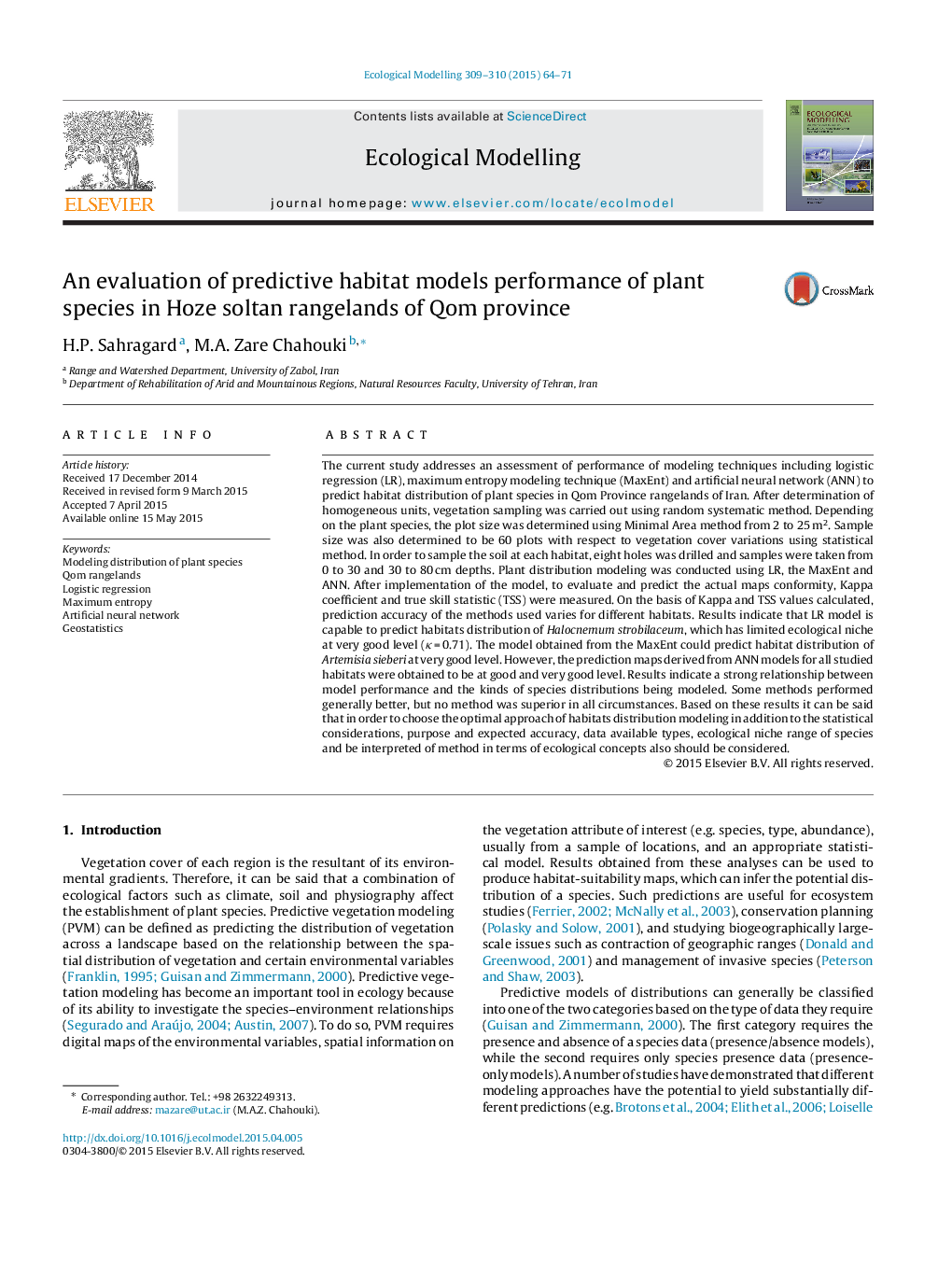| Article ID | Journal | Published Year | Pages | File Type |
|---|---|---|---|---|
| 4375676 | Ecological Modelling | 2015 | 8 Pages |
•We examined predictive performance of LR, MaxEnt and ANN.•No method was superior in all circumstances.•The ANN models performed better overall than LR and MaxEnt models.•The MaxEnt models are more appropriate for wide ecological amplitude species.•LR models were more appropriate for species that have limited ecological niche.
The current study addresses an assessment of performance of modeling techniques including logistic regression (LR), maximum entropy modeling technique (MaxEnt) and artificial neural network (ANN) to predict habitat distribution of plant species in Qom Province rangelands of Iran. After determination of homogeneous units, vegetation sampling was carried out using random systematic method. Depending on the plant species, the plot size was determined using Minimal Area method from 2 to 25 m2. Sample size was also determined to be 60 plots with respect to vegetation cover variations using statistical method. In order to sample the soil at each habitat, eight holes was drilled and samples were taken from 0 to 30 and 30 to 80 cm depths. Plant distribution modeling was conducted using LR, the MaxEnt and ANN. After implementation of the model, to evaluate and predict the actual maps conformity, Kappa coefficient and true skill statistic (TSS) were measured. On the basis of Kappa and TSS values calculated, prediction accuracy of the methods used varies for different habitats. Results indicate that LR model is capable to predict habitats distribution of Halocnemum strobilaceum, which has limited ecological niche at very good level (κ = 0.71). The model obtained from the MaxEnt could predict habitat distribution of Artemisia sieberi at very good level. However, the prediction maps derived from ANN models for all studied habitats were obtained to be at good and very good level. Results indicate a strong relationship between model performance and the kinds of species distributions being modeled. Some methods performed generally better, but no method was superior in all circumstances. Based on these results it can be said that in order to choose the optimal approach of habitats distribution modeling in addition to the statistical considerations, purpose and expected accuracy, data available types, ecological niche range of species and be interpreted of method in terms of ecological concepts also should be considered.
